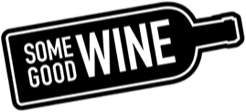
Wines of Chateau de Bois Brincon
Note: this post was taken from the Some Good Wine newsletter. We send it out regularly with info on new wines and recommendations from the Some Good Wine staff. Plus, regular discounts on featured wines! Visit this link to subscribe.

This post was written by Some Good Wine Sommelier, Kim Akhtar. Call her at the store with any questions about these or any other wines: (212) 777-3151
Many years ago, while driving through the Loire Valley, I was astonished at how many gorgeous buildings seem to appear out of nowhere…the Cathédrale de Chartres was one such building that suddenly appeared as I rounded a bend, towering regally above a tall field of wheat. Another such building appeared on the right bank of the Maine River flowing through the town of Angers as I drove slowly, one eye on a map and the other on careening scooters, trying to find my hotel.
I stopped and got out, staring up in awe at the ecclesiastical grandeur of the Hôpital Saint Jean d’Angers. Inside was the Hôtel-Dieu d’Angers, the town’s infirmary founded in the year 1153 by Etienne de Marsay, Henry II’s treasurer. Henry Plantagenêt, then King of England and Duke of Anjou, commissioned the hospital as atonement for his murder of Thomas Beckett, Archbishop of Canterbury.
What does this have to do with wine, you may ask?
Well, where medieval healers were concerned, wine was always present. Wine was used for medicinal purposes, which is why so many vineyards were planted around the various Hôtels-Dieu around France during the Middle Ages.
As such, a few years after the Hôpital Saint Jean d’Angers was built and functioning, the monks who ran it established vineyards on the left bank of the Loire—and that was the beginning of the Château de Bois-Brinçon in a hamlet known as Blaison-Saint-Sulpice. The year was 1219, making the vineyard one of the oldest in the Loire Valley if not the oldest. Six centuries later, as the power of the Church and aristocracy declined, and after the French Revolution of 1789, the property was sold off to the bourgeoisie and came into the hands of the Cailleau Family where it remains today.
Xavier Cailleau is the current owner and winemaker who took over from his father in 1991. “At the beginning, it was a real challenge to return to winemaking and the desire to make wines with a terroir identity,” Xavier acknowledges. “It was a steady evolution, first to organics, then biodynamics. And the vines responded and the grapes began to offer the true face of the soil.”
The wines of Bois-Brinçon are vinified by terroir. “The Anjou region is a mosaic of very varied and rich terroirs,” Xavier explains. “Being at the junction of the Armorican Massif and the Paris Basin, the Bois-Brinçon vineyards offer a rare diversity of soils and landscapes spread over six communes and eight different terroirs.”
Intervention in the cellar is minimal. “We accompany the wines without useless and traumatic interventions,” Xavier says, “like a parent who sees his children grow up and accompanies them so they take the right path.” I first tasted the wines of Bois-Brinçon at a small bistro not far from Domaine, but I wasn’t a “wine person” back then…just a tourist, but they were memorable.
Five years ago, at a Christmas lunch with two other sommeliers, one of whom brought a bottle of “Les Saules de Montbenault,” one of their cuvées, I was blown away: the chenin blanc was laser sharp and sang from whence it came. And the red…the cabernet franc could not have come from anywhere, but this particular corner of Anjou.
The Wines
2016 Chateau de Bois-Brincon La Seigneurie Chemelier Anjou Rouge
La Seigneurie comes from three hectares of cabernet franc, planted on tuffeau terroir of the Turonian. The vines, with an average age over 40 years, benefit from an open landscape with favorable amounts of sunshine. The grapes are destemmed and macerate anywhere between 8 to 21 days, helping extract gentle tannins. After fermentation in cement, the wine is pressed and racked to stainless steel for 12 months, followed by additional aging in neutral barrel for 6 months. 18 months stainless steel, 6 months neutral barrel. Find it!
2015 Chateau de Bois Brincon Les Saules de Montbenault Blanc
Les Saules de Montbenault comes from an 0.80 hectares plot of chenin blanc, grown on rhyolite (volcanic rock), in Faye d'Anjou. Vine density in this vineyard is key, with only 5,000 vines per hectare, resulting in roughly 20 hectoliters per hectare. After an 8-10 hour long press cycle, the must is racked to 400L neutral barrels where the wine is aged sur lie. Find it!
